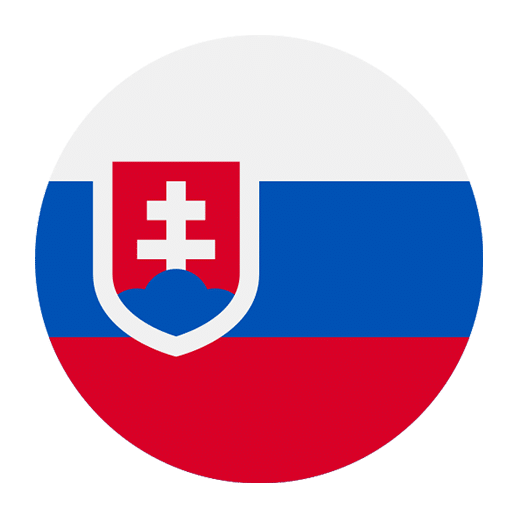Slovakia, a beautiful central European country, boasts a rich cultural heritage and a complex political landscape. As a language learner, understanding the political terms used in Slovakia can enhance your comprehension of news, literature, and discussions about the country’s current events. This article aims to provide a comprehensive overview of essential Slovak political terms, offering you insights into the language and the political system of Slovakia.
The Slovak Political System
Slovakia is a parliamentary democratic republic. Understanding this foundational structure is crucial for grasping the political terminology used in the country. The Slovak political system is characterized by three main branches: the executive, the legislative, and the judiciary.
Executive Branch
The executive branch is primarily comprised of the President (Prezident), the Prime Minister (Predseda vlády), and the Government (Vláda).
– **Prezident**: The President serves as the head of state and is elected by direct popular vote for a five-year term. The President has limited powers but plays a key role in representing Slovakia domestically and internationally.
– **Predseda vlády**: The Prime Minister is the head of government and is appointed by the President. The Prime Minister is usually the leader of the majority party in parliament and holds significant executive powers.
– **Vláda**: The Government consists of the Prime Minister and other ministers. It is responsible for implementing laws and running the day-to-day affairs of the state.
Legislative Branch
The legislative branch in Slovakia is unicameral, meaning it consists of a single chamber called the National Council of the Slovak Republic (Národná rada Slovenskej republiky).
– **Národná rada Slovenskej republiky**: This is the primary legislative body, composed of 150 members elected for four-year terms. The National Council has the power to pass laws, approve the budget, and oversee the activities of the government.
Judiciary Branch
The judiciary in Slovakia is independent and is composed of various courts, including the Constitutional Court (Ústavný súd) and the Supreme Court (Najvyšší súd).
– **Ústavný súd**: The Constitutional Court ensures that laws and government actions comply with the constitution.
– **Najvyšší súd**: The Supreme Court is the highest court of appeal in Slovakia.
Political Parties and Elections
Understanding the terminology related to political parties and elections is essential for following Slovak politics.
– **Politická strana**: A political party. Slovakia has numerous political parties, ranging from left-wing to right-wing ideologies.
– **Voľby**: Elections. There are various types of elections in Slovakia, including parliamentary (parlamentné voľby), presidential (prezidentské voľby), and local elections (miestne voľby).
– **Koalícia**: Coalition. Often, no single party gains a majority, leading to the formation of coalitions.
– **Opozícia**: Opposition. Parties that are not part of the government coalition.
Key Political Terms
To delve deeper into Slovak politics, it’s vital to familiarize yourself with specific terms that frequently appear in political discourse.
Government Structure and Positions
– **Ministerstvo**: Ministry. Slovakia has several ministries, each responsible for different sectors such as health, education, and defense.
– **Ministro**: Minister. The head of a ministry.
– **Štátny tajomník**: State Secretary. A senior official within a ministry.
– **Poslanec**: Member of Parliament. Elected representatives in the National Council.
Legislation and Legal Terms
– **Zákon**: Law. A legal rule passed by the National Council.
– **Návrh zákona**: Bill. A proposed law that is under consideration.
– **Ústava**: Constitution. The fundamental legal document outlining the principles and framework of the state.
– **Referendum**: A direct vote by the electorate on a specific issue.
Political Processes
– **Hlasovanie**: Voting. The process of making decisions or selecting representatives.
– **Mandát**: Mandate. The authority granted to elected officials to act on behalf of the electorate.
– **Kampaň**: Campaign. Activities aimed at gaining support for a political candidate or party.
– **Mandátny výbor**: Mandate Committee. A parliamentary committee responsible for verifying the credentials of members.
Political Ideologies and Movements
Slovakia, like many other countries, has a range of political ideologies and movements. Understanding these can provide context to political discussions and media reports.
– **Liberalizmus**: Liberalism. Advocates for individual freedoms, open markets, and democratic governance.
– **Konzervativizmus**: Conservatism. Emphasizes tradition, social stability, and maintaining established institutions.
– **Socializmus**: Socialism. Advocates for social ownership and egalitarian distribution of wealth.
– **Nacionalizmus**: Nationalism. Prioritizes national identity and interests.
– **Ekologizmus**: Environmentalism. Focuses on environmental protection and sustainable development.
Current Political Landscape
To gain a more nuanced understanding of Slovak politics, it’s helpful to be aware of the current political landscape and key figures.
Major Political Parties
– **SMER – sociálna demokracia (SMER-SD)**: A social-democratic party that has been influential in recent years.
– **Slovenská národná strana (SNS)**: A nationalist party with a focus on Slovak identity and sovereignty.
– **Obyčajní ľudia a nezávislé osobnosti (OĽaNO)**: A populist movement advocating for transparency and anti-corruption measures.
– **Progresívne Slovensko (PS)**: A progressive party focusing on social liberalism and pro-European policies.
Prominent Political Figures
– **Zuzana Čaputová**: The current President of Slovakia, known for her progressive views and environmental activism.
– **Robert Fico**: A prominent figure in Slovak politics, former Prime Minister, and leader of SMER-SD.
– **Igor Matovič**: The leader of OĽaNO and former Prime Minister, known for his anti-corruption stance.
Historical Context
Understanding the historical context of Slovak politics can provide deeper insights into current events and political sentiments.
Velvet Revolution and Independence
– **Nežná revolúcia**: Velvet Revolution. The peaceful transition from communist rule to democracy in Czechoslovakia in 1989.
– **Rozdelenie Československa**: The dissolution of Czechoslovakia. The peaceful split of Czechoslovakia into the Czech Republic and Slovakia in 1993.
EU Membership
– **Európska únia (EU)**: European Union. Slovakia joined the EU in 2004, significantly impacting its political and economic landscape.
– **Eurozóna**: Eurozone. Slovakia adopted the euro as its currency in 2009.
Practical Tips for Language Learners
To effectively learn Slovak political terms, consider the following practical tips:
Engage with Local Media
– **Sledujte správy**: Watch the news. Following Slovak news channels or online news portals can help you learn political vocabulary in context.
– **Čítajte noviny**: Read newspapers. Newspapers like “Sme” or “Denník N” offer in-depth political analysis and reports.
Use Language Learning Resources
– **Slovník**: Dictionary. Use online dictionaries to look up unfamiliar political terms.
– **Jazykový kurz**: Language course. Enroll in courses that focus on advanced Slovak, including political terminology.
Engage in Discussions
– **Diskutujte**: Discuss. Engage in conversations with native speakers about current political events to practice and reinforce your vocabulary.
– **Sledovanie debát**: Follow debates. Watch political debates or parliamentary sessions to hear the terms used in real-life contexts.
Conclusion
Understanding Slovak political terms is a valuable skill for anyone interested in the language and the country’s political landscape. By familiarizing yourself with the political system, key terms, and current political landscape, you can enhance your comprehension and engage more deeply with Slovak media and discussions. Remember to use practical tips like engaging with local media, using language learning resources, and participating in discussions to reinforce your learning. Happy studying!

